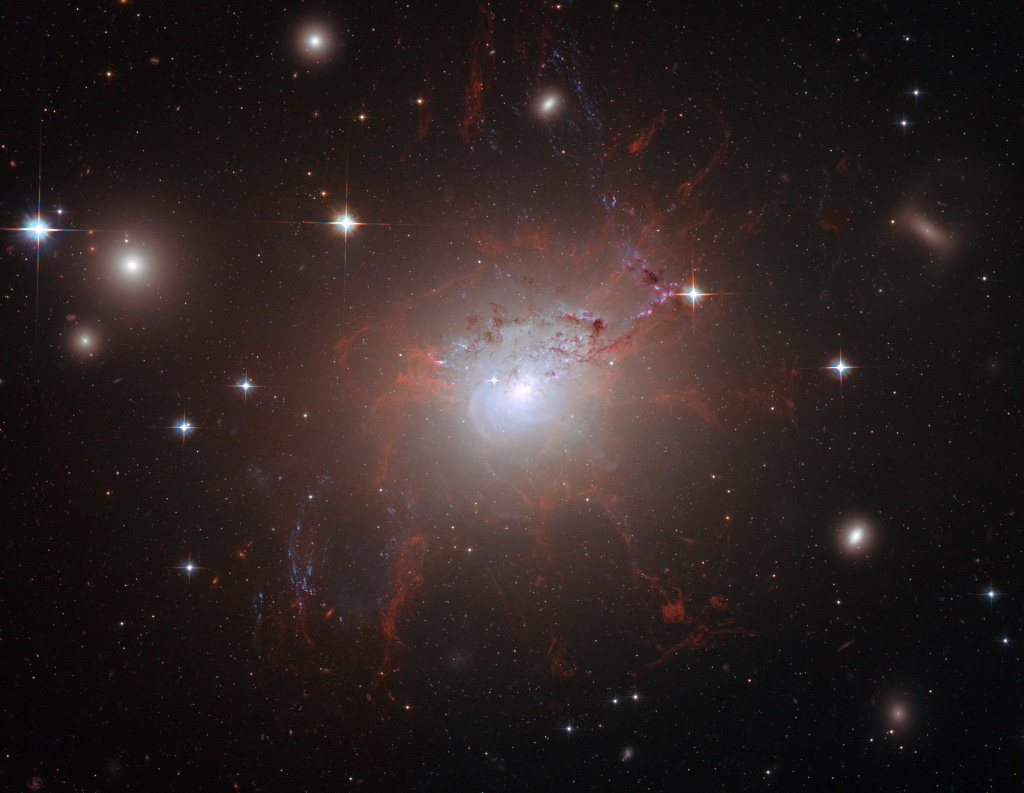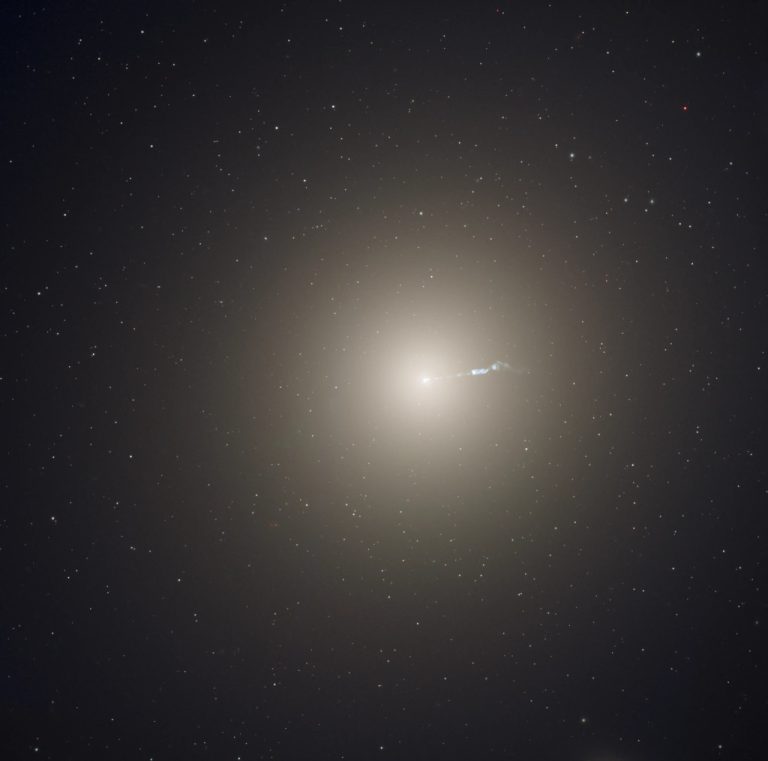2023年1月26日
Active Galaxy NGC 1275
Image Credit: NASA, ESA, Hubble Heritage, A. Fabian (University of Cambridge, UK)
Explanation: Active galaxy NGC 1275 is the central, dominant member of the large and relatively nearby Perseus Cluster of Galaxies. Wild-looking at visible wavelengths, the active galaxy is also a prodigious source of x-rays and radio emission. NGC 1275 accretes matter as entire galaxies fall into it, ultimately feeding a supermassive black hole at the galaxy’s core. This color composite image made from Hubble Space Telescope data recorded during 2006. It highlights the resulting galactic debris and filaments of glowing gas, some up to 20,000 light-years long. The filaments persist in NGC 1275, even though the turmoil of galactic collisions should destroy them. What keeps the filaments together? Observations indicate that the structures, pushed out from the galaxy’s center by the black hole’s activity, are held together by magnetic fields. Also known as Perseus A, NGC 1275 spans over 100,000 light years and lies about 230 million light years away.
Tomorrow’s picture: crossing the plane
活跃星系NGC 1275
图像提供: NASA, ESA, Hubble Heritage, A. Fabian (University of Cambridge, UK)
说明:位在庞大且相对邻近的英仙座星系团中心之活跃星系NGC 1275,是此星系团最大的成员星系。这个星系除了在可见波段看来很狂野之外,也是很强烈的X射线源和电波源。NGC 1275吞食周围其他星系,形成环拱它的吸积盘,最终并把吸积物质饋送给核心的超大质量黑洞。这幅使用哈勃望远镜2006年图像库数据建构的彩色合成照片,突显了被吞食后的星系残骸及有些长达20,000光年的明亮云气丝。在经历星系碰撞的激烈动荡之后,这些云气丝理应会被摧毁,但它们却孑遗了下来。是什么把这些云气聚成丝状?观测指出,图像中这些结构是因为黑洞活动,而从星系中心被推挤出来的,然后在磁场局束下聚集成丝。NGC 1275又名为英仙座A,其跨幅超过10万光年,距离则有2亿3千万光年远。
明日的图片: crossing the plane







